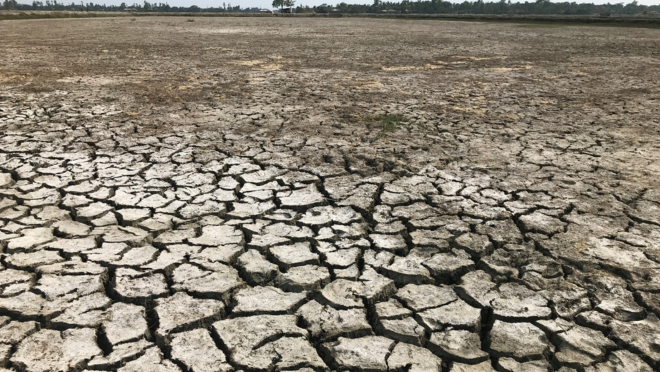From crisis to cultivation: How Science can help farmers beat salinity in southern region of Bangladesh
From crisis to cultivation: How Science can help farmers beat salinity in southern region of Bangladesh

In the lush but fragile coastal belt of Bangladesh, a silent catastrophe is gulping the farmlands. The once fertile fields are now yielding very little crops or nothing at all.
But who do we blame? Who is the culprit? Soil Salinity – a deadly consequence of rising sea levels, saltwater intrusion, and climate change.
This has become a rising challenge for science, particularly environmental science and we can tackle the problem through chemistry.
Present ways to tackle salinity include salt-tolerant crops, soil treatments, and smart innovations. Researchers and farmers are working together to reclaim the soil and bring it to a state it was before and restore productivity and protect the habitat out there.
Salinity: A growing concern below the surface
According to the Bangladesh Agricultural Research Council (BARC), over 2.85 million hectares of land across 19 coastal districts are affected by salinity, particularly during the dry season. This salinity issue has resulted in a decrease in the yields of essential crops, such as rice, pulses, and vegetables, leading to poverty among many farmers.
The origin of this problem includes:
- Rising sea level due to severe climate change (uncertain precipitation)
- Saltwater Intrusion into rivers and canals
- Overuse of groundwater and poor irrigation systems
- Huge expansion of shrimp farming in many agricultural zones
A research paper titled “Impact of Salinity on Rice Producation in the Southwest Region of Bangladesh” by Md Firoz Ahmed and Mohammed Ziaul Haider, back in 2014, stated, “If the salinity of high saline areas can be reduced to the threshold level, farmers will gain about $685 from increased rice yield,” which shows that this problem is not new. Addressing this problem may help the farmers recover from the hefty financial losses they have faced so far.
The science behind salty soils
Before digging into the problem further, it is better to understand the science first. Saline soils contain excess Sodium (Na+), Chloride (Cl–) and Sulfate (SO42-) ions. These hamper the plant’s ability to absorb water and nutrients, damaging the soil structure, reducing aeration and leading to stunted plant growth or even worse, a complete crop failure.
To every problem, there is a solution
As they say, where there is a will, there is a way. We have the “ways” but we do not have the “will”. Despite the provocation, science is providing hope through practical, field-tested strategies which might help us address the problem:
- Salt-tolerant rice varieties
An article in The Business Standard shows that in the year 2006, the Bangladesh Rice Research Institute (BRRI), with the help of the International Rice Research Institute (IRRI), invented the first successful salt-tolerant variety, BRRI-47, which can tolerate salt 12 dS/m (Deci Siemens per metre) at the seedling stage and 10 dS/m-1 during the growth stage, whereas normal crops can only withstand 0.7 dS/m.
- Soil modifications
A recent study has shown that gypsum application can significantly enhance the growth of salt-tolerant rice crops in saline zones. Gypsum (CaSO4) scientifically helps in several ways and aids organic compost when mixed to bring a good result, which includes:
- Improving the soil texture
- Increasing the water retention
- Promoting microbial activity
- Floating gardening
Floating Gardening, also locally known as “baira” or “dhap”, is an agricultural practice that involves layering water hyacinth, bamboo and organic matter to create floating beds for crop cultivation. This method was originally adapted to emerge as a solution for severe monsoon flooding that submerged land for months each year, leading to low-yield crops.
According to resources, floating gardens are most popular in the districts of Gopalganj, Barisal and Pirojpur. Moreover, the UN’s Food and Agriculture Organisation declared Bangladesh’s floating gardens to be a globally important agricultural heritage system in December 2015.
Barriers still remain
Despite these scientific innovations, major challenges remain, such as:
- Lack of Awareness among farmers (especially in the more rural areas of Bangladesh) about these available solutions
- Lack of funds, which becomes a barrier for the cost to accessing gypsum or salt-tolerant crop seeds
- Need for more localised research based on region-specified soil types
- Lack of specialised training
Salinity is not just an agricultural issue; overall, it remains a natural threat to our food security since rice or simply in our mother tongue “bhaat”, is a staple.
If it remains unchecked, Bangladesh may face major losses in rice production and rural employment. But with continued research, better facilities, government support and proper funding, it is possible to tackle this problem.
Hence, Bangladesh’s farmers would not have to fear salt in the soil if science shows a ray of hope.


